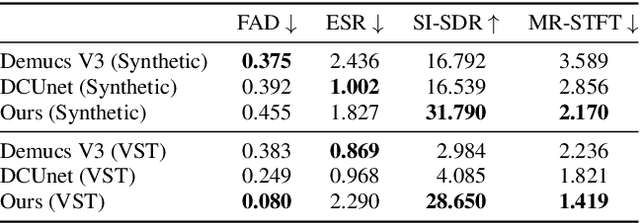Distortion Recovery: A Two-Stage Method for Guitar Effect Removal
Paper and Code
Jul 23, 2024



Removing audio effects from electric guitar recordings makes it easier for post-production and sound editing. An audio distortion recovery model not only improves the clarity of the guitar sounds but also opens up new opportunities for creative adjustments in mixing and mastering. While progress have been made in creating such models, previous efforts have largely focused on synthetic distortions that may be too simplistic to accurately capture the complexities seen in real-world recordings. In this paper, we tackle the task by using a dataset of guitar recordings rendered with commercial-grade audio effect VST plugins. Moreover, we introduce a novel two-stage methodology for audio distortion recovery. The idea is to firstly process the audio signal in the Mel-spectrogram domain in the first stage, and then use a neural vocoder to generate the pristine original guitar sound from the processed Mel-spectrogram in the second stage. We report a set of experiments demonstrating the effectiveness of our approach over existing methods, through both subjective and objective evaluation metrics.
 Add to Chrome
Add to Chrome Add to Firefox
Add to Firefox Add to Edge
Add to Edge